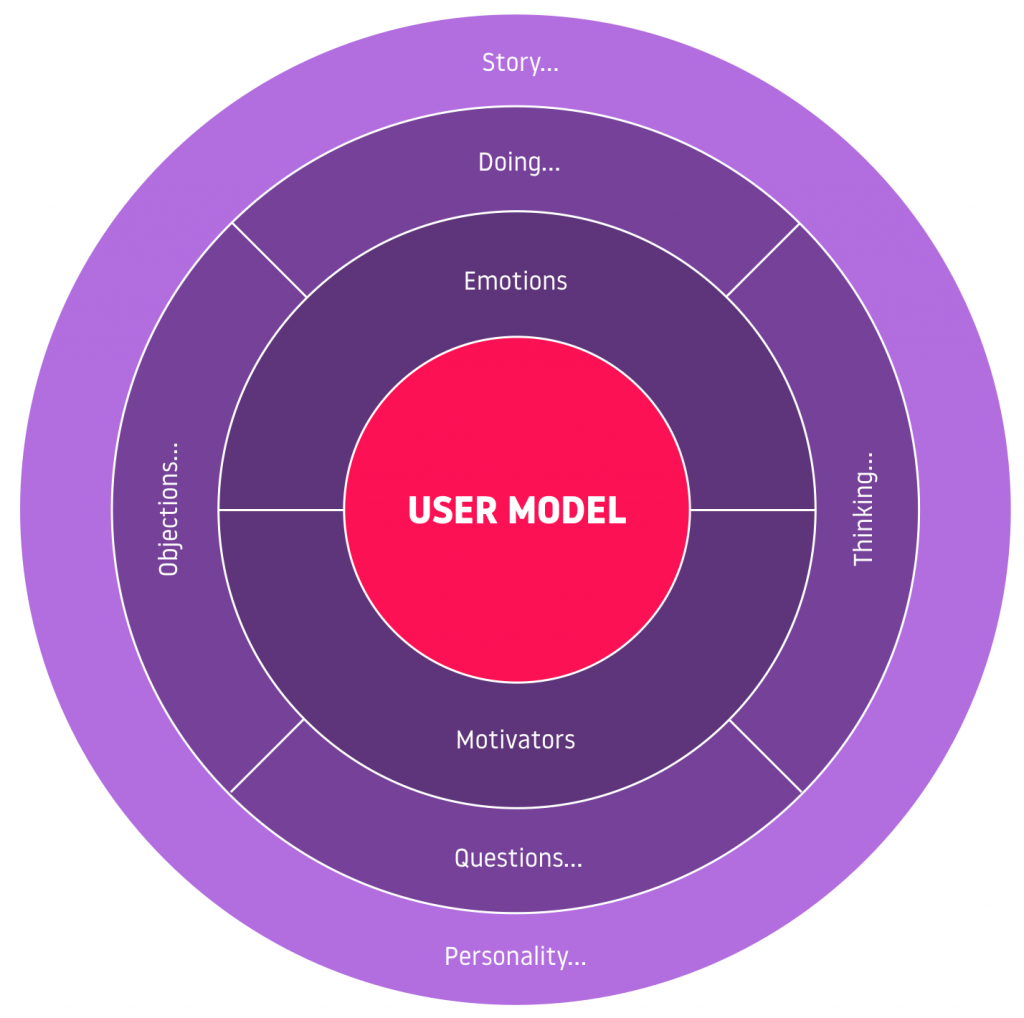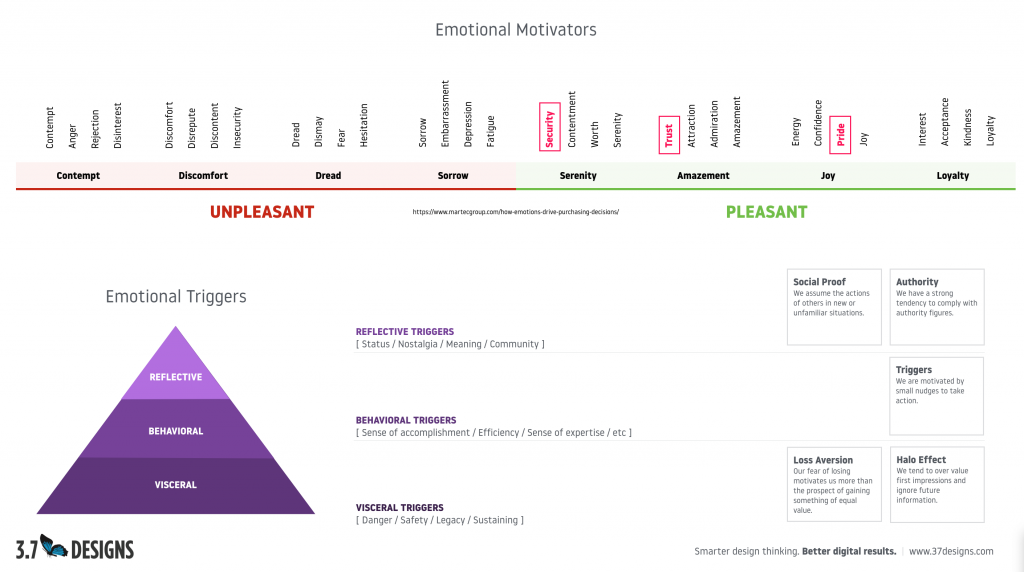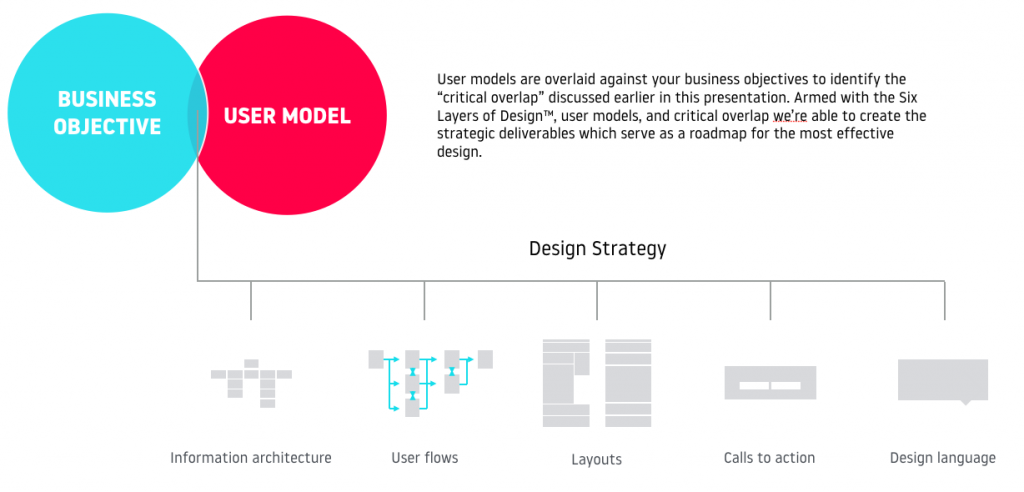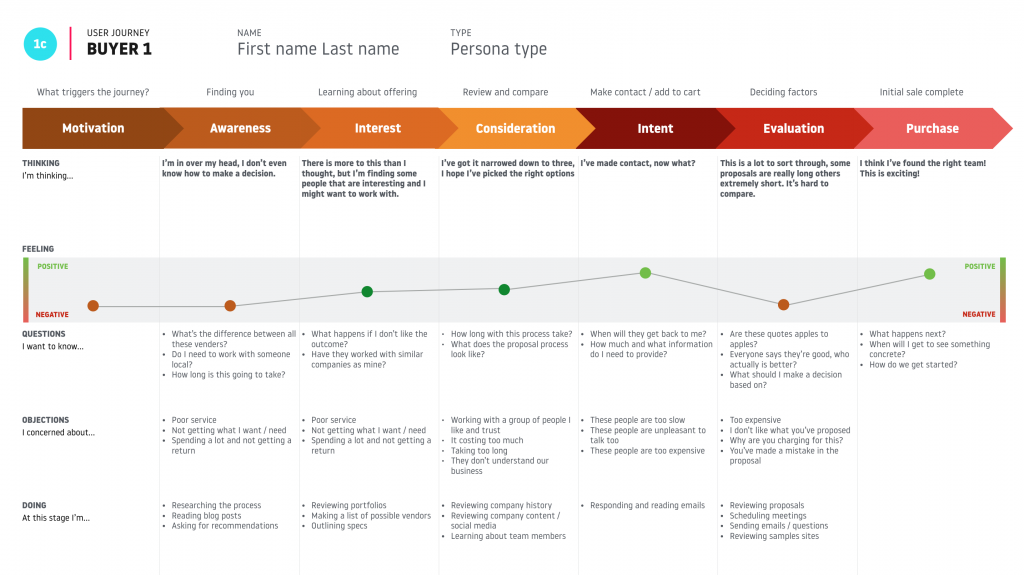Why personas are antiquated (and what you should use instead)
Personas are antiquated… this coming from someone who has relied on and written about them for years.
For years at 3.7 Designs, we’ve created personas during the design discovery phase. I recently realized that the traditional marketing persona is no longer a relevant practice.
The keyword here is “traditional.” At 3.7 we’ve adopted a practice of continual iteration. Each time we go through any process we look for improvement opportunities. As such, the information we collect and what’s conveyed in our personas has changed dramatically over the last five years.
I’m not sure the exact moment when we stopped creating “traditional” personas, but it’s clear no longer doing so. We call our evolved personas “User Models.” Let’s discuss the difference.
What’s is a “traditional” persona?
Traditionally Personas “personify” of your target audience. Simply put, they’re a fictional character that represents a target audience segment. They typically depict demographics like age, gender, family, location, income, education, hobbies, life-state, etc…
This is a valuable practice from the perspective of designing solutions around your target customers, but it typically falls short in terms of actionable insights. How does knowing an approximate age and family size influence your design decisions? Is that information even relevant?
The goal of this process is two-fold. First, to provide context and perspective. With personas, you can ask “How would Jane Doe feel about this approach?” instead of “How do we feel about this approach?” Second is directing design decisions. Meaning you design around what your audience want’s to know instead of what you want to tell them.
The traditional persona falls short on both points. You can’t provide context if you don’t have a clear understanding of your audience and most personas lack the detail required to influence design decisions.
A comprehensive understanding documented through a detailed User Model is a more effective approach.
What is a User Model?
User Models (or Buyer Models) are a more comprehensive version of personas. While user models still personify your target audience, they’re focused on pain points and journeys over demographics and personality.
The idea is relatively simple. Understand and document:
- The root problem users are trying to solve
- The journey they go through to solve it
- A supporting story for empathy and focus

At 3.7 Designs, this is manifested in the following documents:
- Jobs to be done statements
- Top task analysis
- User journey maps
- Emotional maps
- Emotional triggers
- User stories

User Models clarify the emotion and logic of your target audience. When executed properly, you’ll know:
- What triggered their journey?
- What’s the deep, emotional motivator driving their behavior (that they might not even realize)
- What questions do they have at each stage?
- What objections do they have at each stage?
- What are they thinking at each stage?
- What are they doing at each stage?
- What are they feeling along the way?
Hopefully, you can immediately see the value this information brings, but let’s discuss how User Models influence the design process.
Get Your Website Strategy Workbook
Download our website strategy workbook and get the EXACT tools we’ve used to drive +1,000% increases in online sales and leads
How User Models fit into the design process
Every design decision should be made with consideration and reflection of your User Models. Often times the next step in the process is a design strategy. With User Models your strategy is shaped by the needs, thought process, behaviors, and emotions of your target audience rather than speculation.
Some of the more common deliverables that should be influenced by your User Models include:
- Content strategy
- Information architecture
- Page layouts
- Messaging
- Calls to action
- Visual strategy
- Digital marketing strategy

A practical example
User journey maps identify (among other things) questions and objections a user could have from problem identification to post-purchase.

Knowing this information you can identify:
- How to get their attention — i.e. Are they performing a search as a first step, and if so, what questions are they asking?
- How to build interest
- What visual language to use
- What questions you need to answer and objections to resolve
- The stages in the funnel where a call to action is needed
- What alternatives are being considered
- What persuasive design patterns will be most effective
These high-level answers can then be disseminated into page layouts, navigation, visual language, messaging, calls to actions, etc…
How to get started
We’ll be writing a tutorial on how to create a User Model, but that doesn’t mean you can’t get started now. You can immediately enhance your personas by identifying two key pieces of information:
- What is the user’s job to be done?
- What is the user’s top website task?
The best way to accurately answer these questions is communication. Talk to your existing customers and ask them about the process they went through prior to engaging with you. You’ll be surprised how much you learn.
FREE RESOURCE
Get Your Website Strategy Workbook
Download our website strategy workbook and get the EXACT tools we’ve used to drive +1,000% increases in online sales and leads